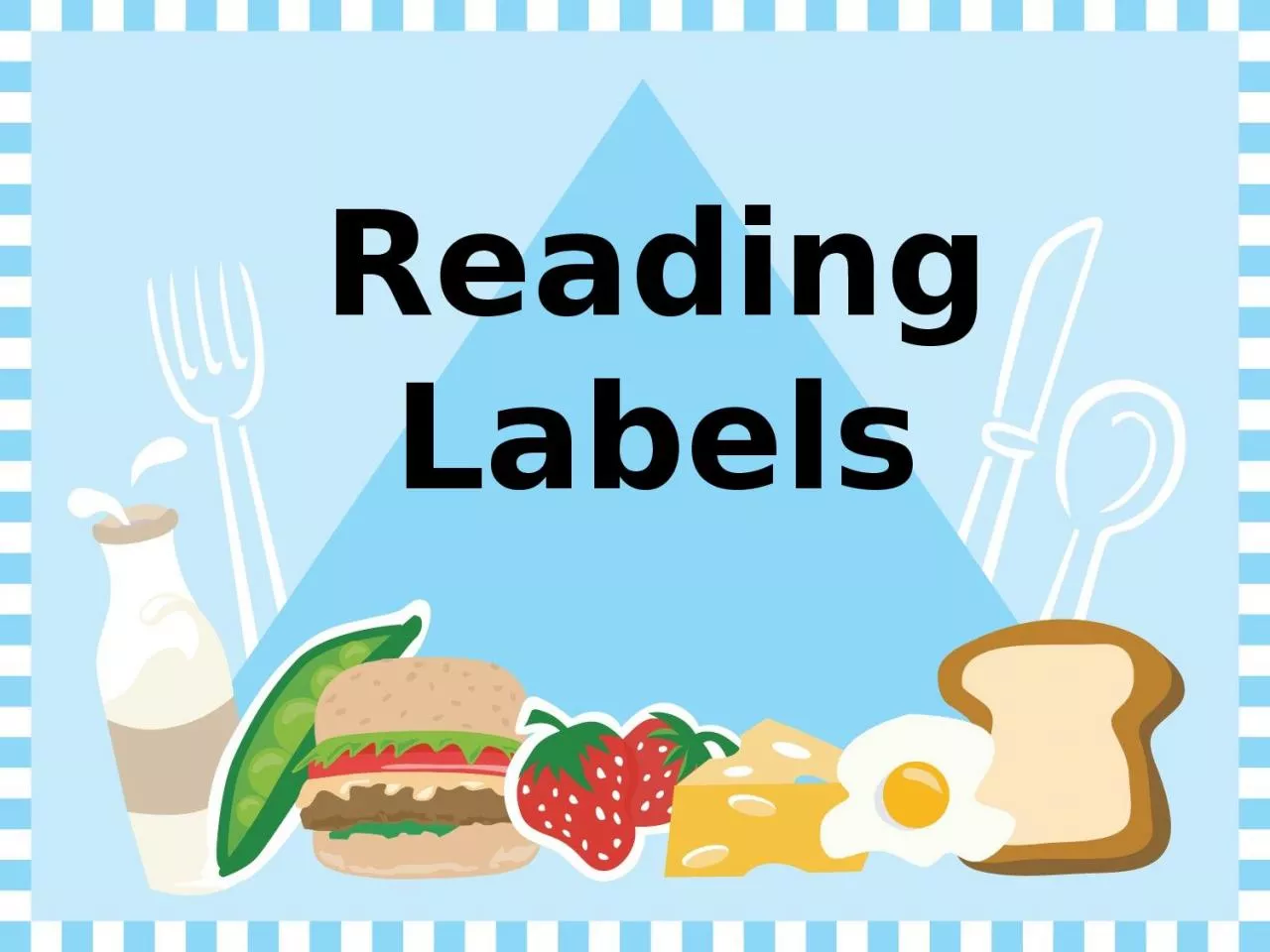

Identify Servings on Labels Identify Calories on Labels Identify ingredients in various foods Identify nutrients on labels and determine if they are a low medium or high content food ID: 1040885
Download Presentation The PPT/PDF document "Reading Labels Objectives" is the property of its rightful owner. Permission is granted to download and print the materials on this web site for personal, non-commercial use only, and to display it on your personal computer provided you do not modify the materials and that you retain all copyright notices contained in the materials. By downloading content from our website, you accept the terms of this agreement.
1. Reading Labels
2. ObjectivesIdentify Servings on Labels. Identify Calories on Labels. Identify ingredients in various foods. Identify nutrients on labels and determine if they are a low, medium or high content food. Differentiate between poor and good food choices based on ingredients.
3. Website Fun http://www.accessdata.fda.gov/videos/CFSAN/HWM/hwmintro.cfm
4.
5. Serving SizeServing SizeThis is the food’s recommended serving size. It can include a weight measurement (for example: one cup) or a number of pieces of food (12 pretzels).Serving per ContainerThis is the suggested number of servings. For example, if a food has four servings per container and you eat half of the bag, you would be eating two servings. It is always important to look at these numbers because you may be eating more than you think!
6. Calories A Calorie represents one unit of energy. Calorie needs vary by age, gender, and activity level.High or Low-Cal Food40 Calories=Low 100 Calories= Moderate 400 Calories or more= HighCalories from fat. These are calories solely from fat. Choose foods with less than 30% of calories coming from fat.
7. Know Your NutrientsLIMIT FatCholesterol Sodium Sugar GET ENOUGH Fiber Vitamins (Vitamin A & C) Minerals (Calcium, Iron and Potassium) Protein & Carbohydrates give us energy. Remember, too many carbs and proteins will be stored as fat.
8. Percent Daily ValuesThe Percent Daily Values are listed on the top half of the food label and are based on recommendations for a 2,000 calorie diet, not a 2,500 calorie diet. This is the percentage of each nutrient recommended to meet the needs of the average person each day and is measured in grams and milligrams depending on the nutrient.
9. Checking IngredientsItems are listed by weight in descending order of predominance. Spices, artificial coloring and flavors are listed on the ingredient list.
10. Apply Your KnowledgeComplete the worksheet on reading nutrition labels.
11.
12.